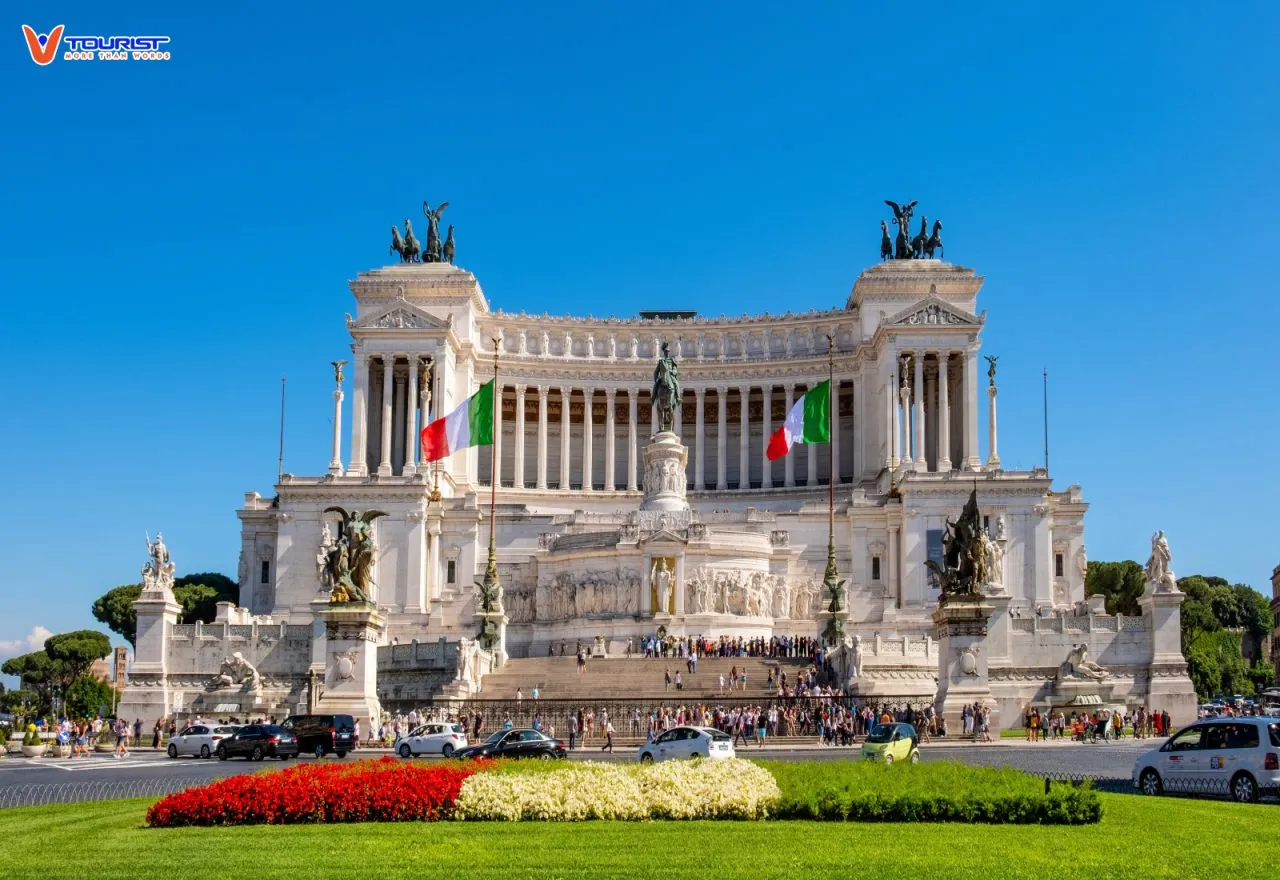Italy, the land of Renaissance art, magnificent architecture, and exquisite cuisine, is also famous for its stunning piazzas (squares). Almost every city in Italy boasts at least one piazza, a meeting point of history, culture, and everyday life. These squares are not just public spaces but also symbols of the city, witnesses to important events, and ideal meeting places for both locals and tourists. Let’s explore the most beautiful piazzas in Italy, where you can fully experience the beauty and vitality of this boot-shaped country.
Piazza Navona, Rome: A Baroque Masterpiece in the Eternal City
Piazza Navona is one of the most famous and beautiful squares in Rome, deeply imbued with Baroque architectural style. Located on the site of the ancient Stadium of Domitian, the square still retains its distinctive elliptical shape. Navona’s charm comes from the harmonious combination of architecture, sculpture, and vibrant atmosphere.

In the 17th century, under Pope Innocent X, Piazza Navona was “reborn” thanks to the talent of leading artists such as Bernini, Borromini, and Rainaldi. Rainaldi built the magnificent Palazzo Pamphilj, once the Pope’s residence and now the Brazilian Embassy. The highlight of the square is the Church of Sant’Agnese in Agone, a beautiful architectural work dedicated to the young martyr Saint Agnes. Visitors can join tours to explore the magnificent interior of the church, especially the dome and the Chapel of Saint Agnes.
Fountains: The Soul of Piazza Navona
Piazza Navona is famous for its three beautiful fountains, each with its own beauty and story. The central fountain, Fontana dei Quattro Fiumi (Fountain of the Four Rivers), is a masterpiece by Bernini, depicting four river gods representing the major continents: the Nile (Africa), the Danube (Europe), the Ganges (Asia), and the Rio de la Plata (America). From the base of the fountain rises an Obelisk of Domitian, reminiscent of the Egyptian obelisk in St. Peter’s Square. This fountain is also known from the famous movie “Angels & Demons”.
At both ends of the square, visitors can admire the Fontana del Moro by Giacomo Della Porta with its unique pink marble base, and the Fontana del Nettuno, depicting the sea god wrestling with an octopus. The harmonious combination of architecture, sculpture, and the sound of flowing water creates a relaxing and inspiring space at Piazza Navona.
In the evening, Piazza Navona becomes even more lively with light shows, street performances, and countless cafes and restaurants. This is an ideal place for visitors to stop, enjoy Italian cuisine, and immerse themselves in the bustling atmosphere of Rome.
Piazza Venezia, Rome: Historical Crossroads at the Foot of Capitoline Hill
Piazza Venezia is located in the heart of Rome, at the foot of Capitoline Hill and close to the Colosseum. This square is an important junction, where many major roads converge and is an ideal starting point to explore Rome’s famous historical sites.
National Monument to Vittorio Emanuele II: Symbol of Italian Unification
The highlight of Piazza Venezia is the National Monument to Vittorio Emanuele II, also known as Altare della Patria. This white marble architectural work was built to honor Vittorio Emanuele II, the first king of unified Italy in the 19th century.
The monument is massive and lavishly designed, with statues, reliefs, and intricately carved stone columns. Inside the monument is the Risorgimento Museum, which displays artifacts and documents related to the unification of Italy. Visitors can take an elevator to the top of the monument to admire the panoramic view of Rome from above.
Palazzo Venezia: From Papal Residence to Mussolini’s Headquarters
Piazza Venezia is named after Palazzo Venezia located on the west side of the square. The palace was built in the 15th century by Cardinal Pietro Barbo, who later became Pope Paul II. In the 20th century, Benito Mussolini used the palace as his headquarters and balcony to address the public.
Today, Palazzo Venezia is a museum, exhibiting works of art from the 14th to the 18th centuries, including paintings, sculptures, furniture, and ceramics. The museum also has a collection of antique German wooden statues and an oil painting gallery with works by Francesco Solimena and Donato Creti.
In addition to Palazzo Venezia, the square also has two smaller palaces, Palazzo Generali and Palazzo Bonaparte. Visitors can stop at one of the cafes in the square to enjoy an espresso and watch the crowds go by.
Spanish Steps, Rome: Classic Charm in the Heart of the City
The Spanish Steps, or Scalinata di Trinità dei Monti, are one of the most famous landmarks in Rome. Despite its name, the staircase is located in Italy, and its name comes from the fact that the area was once the location of the Spanish Embassy.
The Spanish Steps were built in the 18th century, connecting Piazza di Spagna at the bottom with the Trinità dei Monti church at the top. Architect Francesco de Sanctis designed the staircase with 138 steps, combining curves, straight lines, and scenery to create an architectural work harmonious with its surroundings.
In the 18th and 19th centuries, the Spanish Steps were a meeting place for artists, writers, and free thinkers. Today, although eating on the steps is prohibited, it is still an attractive destination where visitors can sit, relax, chat, and admire the beauty of Rome.
Conclusion
The most beautiful piazzas in Italy are not just public spaces but also living museums where visitors can explore the history, culture, and art of this country. From the magnificent beauty of Piazza Navona to the grandeur of Piazza Venezia and the classic charm of the Spanish Steps, each square tells its own story and possesses a unique beauty. Come and experience the intersection of past and present, between architecture and everyday life in these wonderful squares. You will not only “travel around the world” but also live with Italian culture, gaining a deeper understanding of the history and people here.